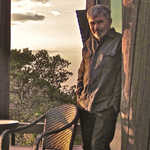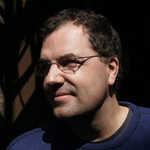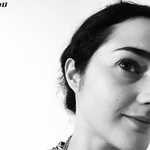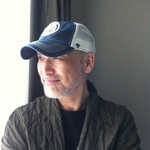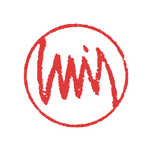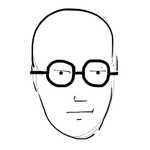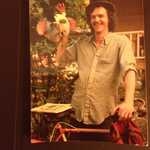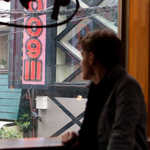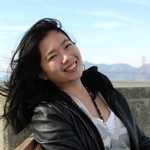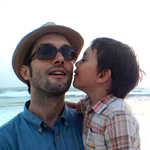

We were paying homage to Chris Marker (1921-2012), a reclusive filmmaker, in Shinjuku Golden Gai.
April 14th, 2014, 9pm
Christophe, my friend from Paris, was in the city. After dinner, we visited “Shinjuku Golden Gai” to find a bar where Chris Marker used to hang out. Years ago, Christophe and I became friends through an online Japanese film discussion group. There was no Facebook or Twitter back then.
Shinjuku Golden Gai used to be a black market during the U.S. occupation period. Many “shops” were actually illegal brothels. As opposed to “a red light” district, this area was called “a blue light (aosen).” After the Anti-Prostitution Act was passed in 1958, all the shops became bars. Now, each one is tiny like a matchbox and with a strange name and specific theme. Graphics on their shop signs are so retro that you feel like time-tripping to the 70s or even to the 50s. On these narrow alleys, more than 200 bars are clustered together.
As I was telling a brief history about the area, Christophe recognized one small door with illustrations of cats. Below the cats, one of Chris Marker’s movies was engraved. If you’re his fan, you’d recognize. The door was open and we peeked in and saw narrow and steep stairs with green linoleum. “Let’s go in,” Christophe said, but I hesitated. Those bars in Golden Gai are somewhat intimidating, as if only regular customers can go in. I always hear that known journalists, filmmaker, and writers hang out here. But Christophe didn’t give up, “Just a little bit.”
We went up the stairs, but the tiny bar was packed. There were about eight people crammed in shoulder-to-shoulder. Five of them turned out to be French. Christophe began talking about his encounter with “Kumiko,” one of Chris Marker’s muses, in Paris. Then we went downstairs, back in the alley again.
During the German occupation, Marker was a philosophy student and a member of the French Resistance. After the war, he became a journalist. He made his first movie, a documentary film on the 1952 Helsinki Olympics, and worked as an assistant director for Alain Resnais’ “Night and Fog.” His masterpieces include “La Jetée” (1962), a strange homage to Hitchcock’s “Vertigo,” and “Sans Soleil” (1983), a philosophical mediation of memory through images of Japan and Guinea-Bissau. His films teach us that the past is the future, and the future is the past. That’s how our memory works.
As I took this photo of Chritophe in Golden Gai, I was absolutely certain that years ago, I already knew I would be here, taking his photo, in 2014. Yes, I was under Chris Marker’s spell.
Other moments in Tokyo
-
Conversations, World Affairs, Culture
"I'm from Libya," he said. I don't know what to say. It's as if he'd told me he'd just come from his father's funeral.
in Tokyo, Japan -
The first specialty coffee shop in Ikebukuro and Junkudo (bookstore) resonate.
in Tokyo, Japan -
film, edit
Editing is interpreting.
in Tokyo, Japan -
The Riddle of Steel.
in Tokyo, Japan -
Commutes, Cities, Underground
The man stands motionless in a crush of white-shirted salarymen, as they swarm past him, toward the single escalator.
in Tokyo, Japan -
Reve, japan, Centre commercial piscine
Rêve de centre commercial-piscine
in Tokyo, Japan -
Urban Nature, birds
Sparrow Noise
in Tokyo, Japan -
City walks
Birthday walk home
in Tokyo, Japan -
Dead Letter, Addiction
"Dear Cigarettes"
in Tokyo, Japan
